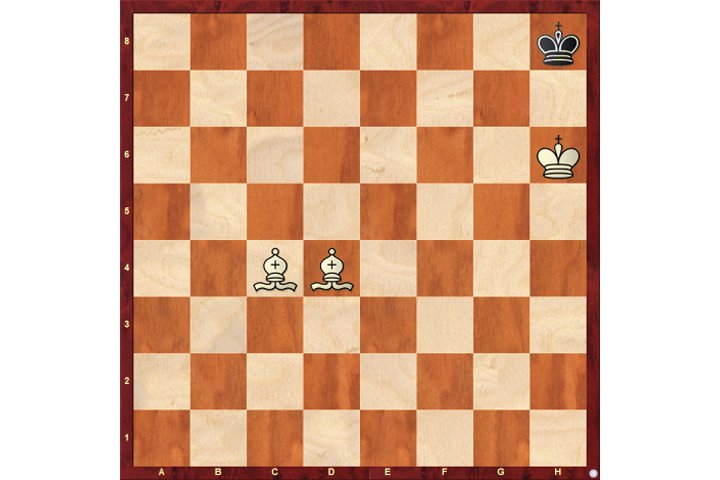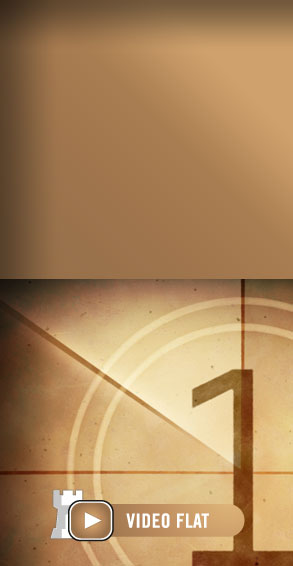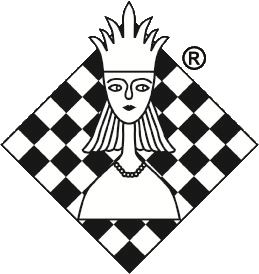Some people simply can’t appreciate the true value of things. Surely you have met them before: they pour coke into expensive wines, spoil delicate dishes with huge amounts of salt and pepper, eat popcorn and talk at the cinema, and fall asleep (and snore) in concert halls. They know that drinking good wines, attending concerts and dining in fancy restaurants is supposed to be a good experience, but they absolutely don’t know why. They simply can’t enjoy these things.
Similarly, many chess players can’t really make a good use of strategical advantages. They know that controlling the centre or having a space advantage should be a good thing, but they barely know how to make use of it.
And the most striking example: most chess players do not know what to do with a pair of bishops. This is a recurring experience in my career as a coach: everyone knows that having a bishop-pair is good, but almost no one knows what to do with it.
And we are not speaking about amateurs only. Even titled players do have significant problems with this strategic concept.
----
Please, have a look at the following example:
Pacher-Bobula, Slovak Team Championship 2009, White to move:
Milan Pacher, playing with white pieces, earned his IM title in the year the game was played. Today, he is a GM with extraordinary attacking skills. And yet, in the diagrammed position he played:
16.f4?
Why is this a bad move? Well, having a bishop-pair means playing against a knight. It is your main task to deprive this knight of good central squares. This means you should place your pawns very carefully, so that no weak squares for the knight appear in your position.
But Pacher’s thinking was probably different. He felt that having a bishop-pair, he should do something “active”. And therefore, he marched forward with his f-pawn.
However, this is wrong. Having a pair of bishops, you are in no hurry. Usually, the longer the game, the stronger is the bishop-pair. Long game means exchanges, exchanges mean empty board, and on an empty board 2B are considerably stronger than B+N.
Therefore, an experienced GM would play a rook move or something like 16.a4.
The game continued:
16…c5! 17.c4?! (17.dxc5 is a better way to go, although Black earns a tempo, as the white king is weakened after f2-f4) 17…Nf6 18.Bc3 Rfd8 19.d5 Be7 20.Rfe1 Kf8
White’s mistaken activity has brought him into an unpleasant position: his centre is vulnerable. However, even here he can hold approximate equality playing 21.Bxf6. But Pacher was still thinking that he should keep his pair of bishops and be active. He played 21.Rad1?!, sacrificing the d5 pawn for non-existent counterplay. Black won in 44 moves.
Here's the complete game:
----
So, what should a player do with a pair of bishops? We already identified two don’ts: you should not hurry and you should not change your pawn-structure carelessly. Let us have a look at two dos as well.
Firstly, you should usually place your pawns on the colour of your opponent’s bishop. E.g. if you have 2B against a N and a light-squared B, you should put your pawns on light squares. Why? Well, for two reasons: 1) you want to restrict the opponent’s bishop and 2) if the light-squared bishops get exchanged in the future, you want to have a “good” bishop against a knight.
Knowing this rule, it will be easy for you to find out what Kramnik should do in the following position:
Kramnik-Tiviakov, Wijk aan Zee 2001, White to move:
The former World Champion had to decide: Should he keep the dark-squared bishop closed or should it open the lines for him, closing at the same time the path for his light-squared brother? Knowing the abovementioned rule, the solution is simple. Kramnik played quickly 15.c4! Rfe8 16.d5!, disappointing the black light-squared bishop.
Here's the complete game:
---
The second advice on playing with a bishop-pair is considerably more complex. I will try to do my best to explain it as clearly as possible:
When you have a bishop-pair, there are at least two scenarios your opponent wants to avoid. Firstly, he does not want the position to open. Secondly, he does not want to put his pawns on the colour of his bishop, as then the squares of the opposite colour would be too weak.
Missing a bishop, your opponent will often decide against a pawn move that would be perfectly good and normal with both his bishops on the board. And you can use this fact by gaining more space than usual.
Therefore, with a bishop-pair you can play for win-win scenarios. Often if you start gaining space in a smart way, your opponent will be left with two unappealing choices: 1) he does not oppose and thus ends in a cramped position, or 2) he does oppose but allows the position to open for your bishops, or compromises his own bishop.
The previous sentences were a little bit too abstract. Here is a very good illustration of the principles mentioned above:
Fischer – Ibrahimoglu, Siegen 1970, White to move:
White’s pair of bishops is idle, and it might seem that it has very little value. However, that would be a misjudgement. Fischer’s plan is to gain space on the queenside, and for Black it is difficult find an appropriate answer.
Please note that the seemingly natural 12.f4?! is a bit too pushy. After 12…e5 13.f5 Bh6! it becomes clear that White has violated several rules previously mentioned in this article and thus complicated his task.
Fischer played 12.a4, and after 12…Rad8 13.Nb3 Black had to choose. Should he allow a4-a5 and Be3, after which his entire queenside is under pressure? Or should he oppose this plan? Ibrahimoglu chose the latter:
13…b6 14.Be3 c5 15.a5 e5 16.Nd2 Ne8 17.axb6 axb6
Black managed to avoid being suffocated. However, the price he paid was too high. His bishop is very passive and the light squares in his camp are extremely weak. There is no doubt White is much better.
Fischer played 18.Nb1! and went on to win a fine game.
----
Next time you will be enjoying the advantage of a bishop-pair, please enjoy it mindfully. Remember:
- Creating holes in your pawn structure might ruin your advantage altogether, as a safe centralized knight usually compensates a pair of bishops.
- Be patient! Your time will come, when the chessboard empties itself a bit.
- Put your pawns on the colour of your opponent’s bishop, thus restricting it.
- Remember that having a bishop pair often allows you to gain space, as your opponent has to be very careful with his pawn play.
PS. Please note that all examples in the article contained the material 2B vs. B+N. Surely your opponents can also have two knights, but far more often he will have B+N. Why? The reason is purely mathematical, based on combinatorics. For further insight, please check my book Under the Surface.

Jan Markos, Under the Surface, Quality Chess 2018
Links
























